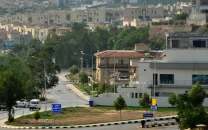KE presents formula for loadshedding-free city
Asks govt to take over 300 loss-making feeders in problematic area, recover bills

The Chief Executive Officer (CEO) of K-Electric, Moonis Ali has presented a practical formula to eliminate load shedding in Karachi.
Speaking at a session with the Council of Economic and Energy Journalists (CEEJ) on Saturday, Ali revealed that 300 of the 2,129 electricity feeders in Karachi are responsible for 87% of total power losses, making them the primary cause of persistent load shedding in the city.
To address this issue, the CEO offered a proposal to the government, suggesting, if it takes over these 300 feeders and manage the internal power supply in these areas, KE would provide load shedding-free supply to Karachi. He added that KE would supply power to these feeders, and the government would be responsible for recovering the bills.
According to Ali, 70% of Karachi is already exempted from load shedding. KE is also working on deploying advanced technology to curb electricity theft. For instance, if the PMT (Pole Mounted Transformer or Photomultiplier Tube) is tampered with, it would trigger a technical fault that would take up to three days to repair, discouraging illegal interference.
Ali urged the government to support KE in managing internal systems in the problematic areas.
Discussing future plans, Ali clarified that the multi-year tariff would not put extra burden on regular consumers. Instead, the tariff framework is designed to attract foreign investment into Karachi's power infrastructure. He noted that National Electric Power Regulatory Authority (NEPRA) would review the investment yearly; in the future, electricity could become cheaper for Karachi consumers.
He added that with the implementation of the multi-year tariff, Karachi would be 90% load-shedding-free by 2030. By then, the number of consumers in the city would reach five million, and power transmission would reach 5,000 megawatts.
In response to a question, Ali stated, KE is fully prepared to supply power to captive power industries by integrating them into the national grid and is willing to work with the government and stakeholders on a set timeline for grid transmission.
He concluded by noting a significant rise in electricity demand in recent months due to increased industrial activity in Karachi. Currently, KE has the capacity to supply 4,500 megawatts of electricity to the city.
Protest
Citizens in Quaidabad area protested against extended power outages on National Highway. The protest, which began at around 8pm on Friday, until Saturday evening causing worst traffic jams.
Taking advantage of the situation, fearless armed men also did their job of robbing people. In one incident, armed men snatched a motorcycle from a young biker and fled the scene.
MQM-P
The members of the Sindh Assembly belonging to the Muttahida Qaumi Movement Pakistan (MQM-P) have expressed deep concern and outrage over prolonged load shedding during the extreme heat.
They said, instead of improving service, the K-Electric, as usual, has increased the duration of load shedding. Korangi, Landhi, Malir, Shah Faisal Colony, Mehmoodabad, Burns Road, Garden, Nazimabad, Orangi Town, Baldia Town, North Karachi, New Karachi, Surjani, and Old City Area are the most affected. In Shah Faisal Colony, consumers connected to Abbas Bawazir PMT are the worst hit as the last load shedding of the day begins at 12 midnight and ends at 2.30am. Sometimes it is beyond 2.30am.
The MQM-P MPAs stated that the city that feeds the entire country is deprived of its basic rights.




















COMMENTS
Comments are moderated and generally will be posted if they are on-topic and not abusive.
For more information, please see our Comments FAQ